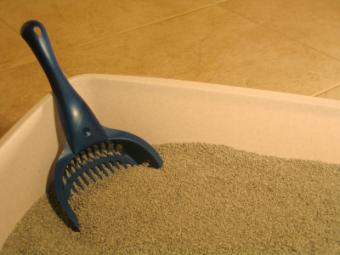
Using a litter box comes naturally for most cats, so litter training a new kitten can be a fairly simple affair. All you need are a few training items and a simple plan to follow, and you're on your way to success.
Prepare for Litter Training Your Kitten
1. Choose a Litter Box
You'll find different styles of litter boxes on the market, but it's best to keep things simple during training. This means choosing a shallow box that will be easier for a kitten to climb in and out of on her own, especially if you're dealing with a very young kitten. If you want to try out an automatic litter box at some point in the future, you can. You just don't want the sound of a motor or moving parts to frighten her away from using the box before she's fully trained.
2. Choose Litter

There are many types of cat litter, and each has its advantages and disadvantages. Many pet owners prefer clumping cat litter because it's easy to scoop waste out of the box without having to change all the litter each day. However, litters made from recycled newspaper, wheat, corn cob, and more are all readily available at pet supply stores, so choose the one that suits your needs best. Just keep in mind that many cats become accustomed to a certain type of litter, and it can be difficult to switch them to another type later on. You'll also need a scoop for sifting waste.
3. Choose the Location
Ideally, you'll want to set the litter box up in the area where you plan to keep it in the future. This should be a fairly secluded area where your pet will have a little privacy such as a laundry or utility room. Keeping the box in the same location helps her learn quickly where she should go to relieve herself.
Introduce Your Kitten to Her Litter Box
The majority of kittens simply need to be shown where the litter box is, and their natural instincts will kick in. So begin training your kitten as soon as you bring her home.
- Upon arriving home, carry her to the box and gently set her on top of the litter.
- Scratch the clean litter with your hand to encourage your kitten to explore it, and then back away. Kittens often like to paw the litter a bit before using it.
- After you show your kitten where the box is located, go ahead and give her food and water.
- Wait fifteen or twenty minutes, and then take her back to the litter box.
- If your pet doesn't urinate or defecate at that time, wait two hours and try again.
- Continue encouraging your to kitten to use the litter box at two hour intervals throughout the day.
Limit Territory During Training

Limiting your kitten's roaming territory while she's learning will go a long way toward ensuring that she develops a strong habit of using her litter box, rather than going someplace else in your home. The following suggestions will help you reinforce her training.
- Keep her in the room with the box whenever you can't be with her. This includes when you're away from home and when you're asleep.
- In addition to the litter box, equip the room with food, water and a comfortable place to sleep.
- Scoop the litter as often as necessary to keep the box clean. Kittens are more likely to use a clean box rather than a dirty one.
Once your kitten consistently uses her litter box, you can gradually begin increasing the time you allow her to roam free in your home until she no longer needs to be confined at all.
Tips to Avoid Set Backs
Sometimes a kitten will experience a set back during training and begin relieving herself someplace other than her litter box. Here's some additional advice that should keep problems to a minimum.
- Set up the box and your cat's food dishes on opposite sides of the room. Cats do not like to use the litter near their food.
- Clean up house accidents with a good enzymatic cleaner. By removing the scent of where she has soiled before, your pet is less likely to soil that area again.
- If you catch your kitten going outside the box, calmly place her in the litter box to remind her where she should relieve herself.
- Consider having your kitten spayed or neutered. Older kittens in particular may begin marking their territory outside of the litter box.
- Try different brands of litter to figure out which one your cat likes best.
Achieving Success
Kittens may be naturally inclined to use a litter box, but it's still up to you to help your own pet succeed. Keep a close eye on her during the training period, and be as consistent as you can about taking her to the box and keeping it clean for her. If you can do that much, she'll likely do the rest on her own.







